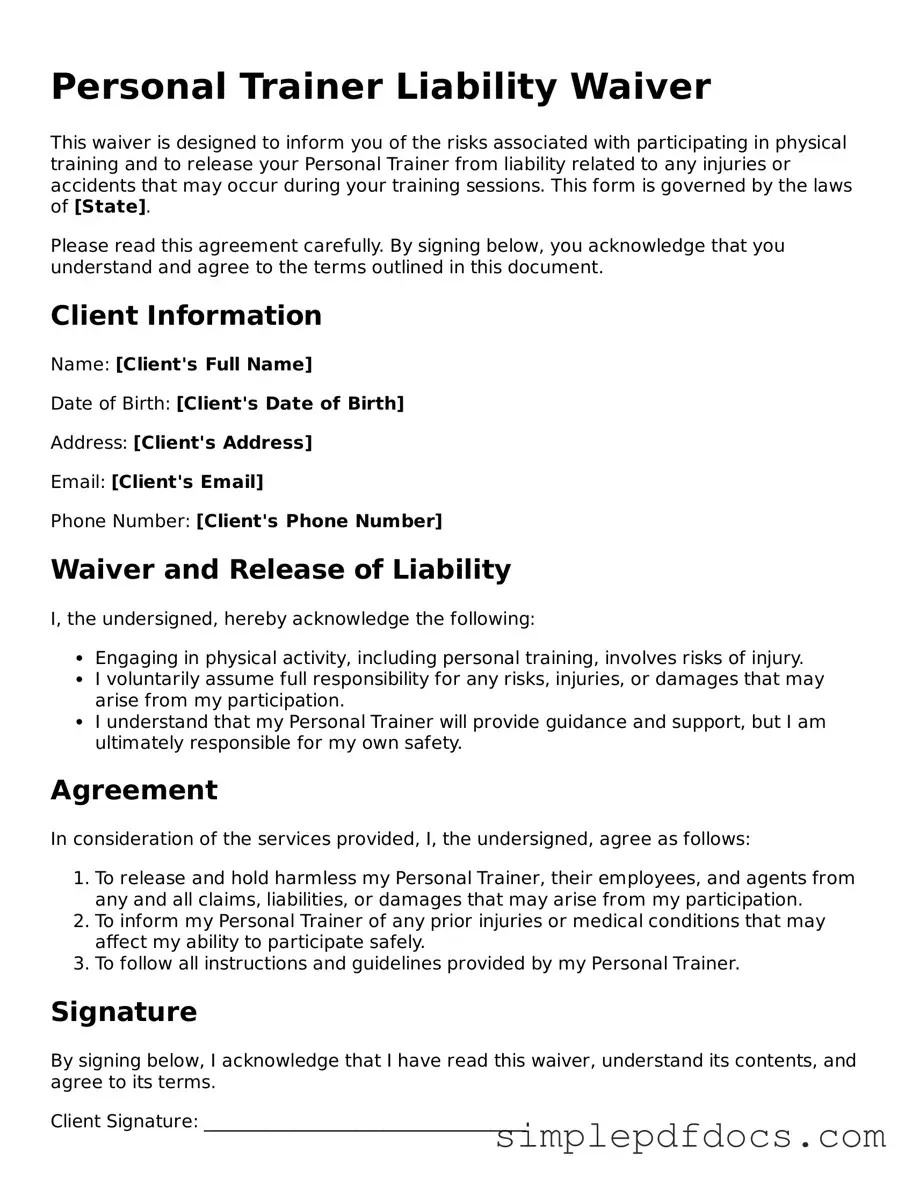Engaging in personal training can be a transformative experience, offering individuals the opportunity to improve their health and fitness under the guidance of a professional. However, with any physical activity comes inherent risks, which is where the Personal Trainer Liability Waiver form plays a crucial role. This document serves as a protective measure for trainers and fitness facilities, outlining the responsibilities and potential hazards associated with training sessions. By signing the waiver, clients acknowledge their understanding of these risks, thereby releasing the trainer from liability for injuries that may occur during workouts. The form typically includes sections detailing the scope of services provided, any health disclosures required from the client, and a clear statement of consent. It emphasizes the importance of open communication regarding any pre-existing medical conditions and encourages clients to consult with their healthcare providers before beginning a new fitness regimen. Ultimately, this waiver not only safeguards trainers but also fosters a sense of accountability and awareness for clients as they embark on their fitness journey.
